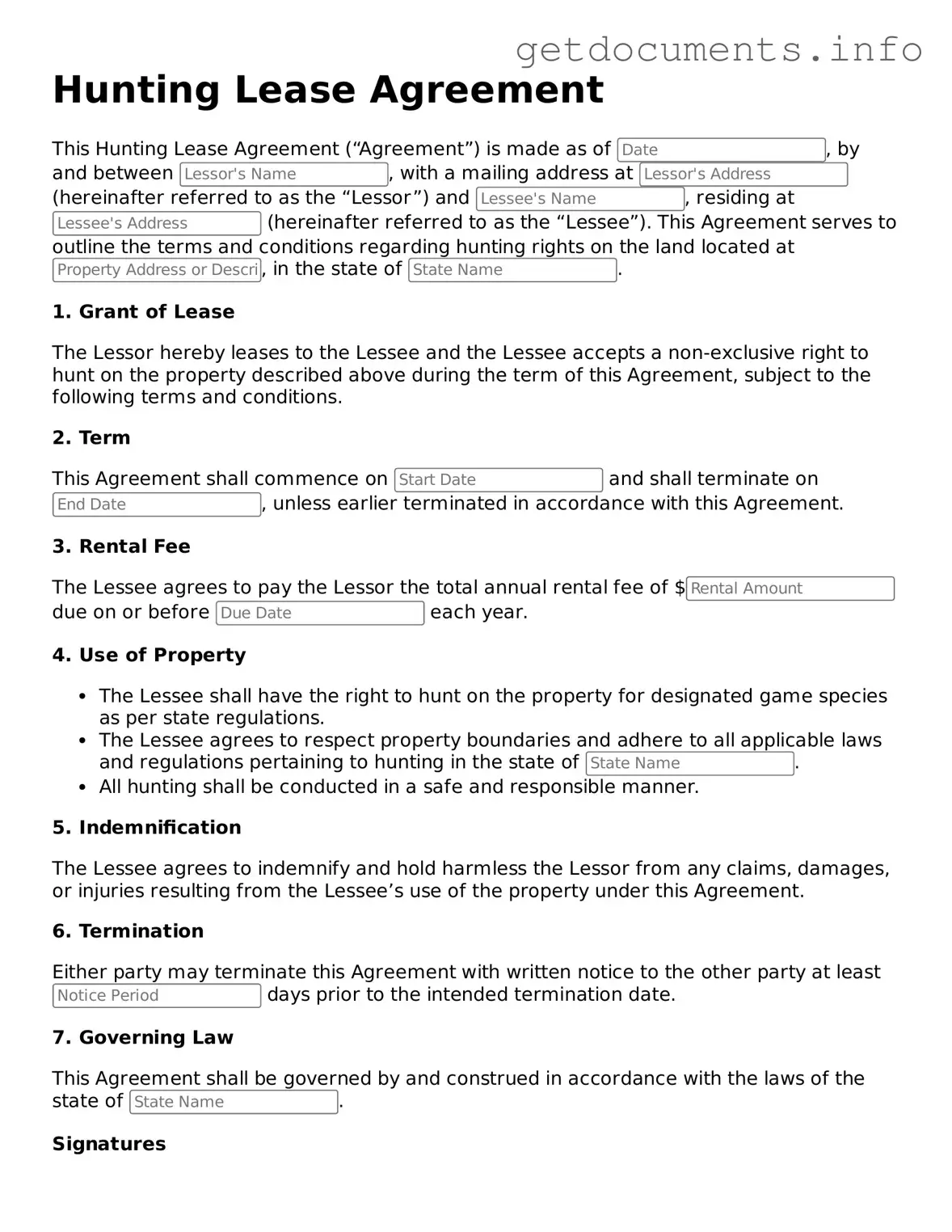For those who cherish the thrill of the hunt, securing a hunting lease can transform a passion into a fruitful experience. A Hunting Lease Agreement form serves as a vital tool in this process, outlining the responsibilities and rights of both the landowner and the hunter. This document typically includes essential details such as the duration of the lease, the specific boundaries of the hunting area, and the types of game that may be pursued. Additionally, it addresses the financial aspects, including the rental fee and payment schedule, ensuring that both parties are clear on their obligations. Safety protocols and liability considerations are also crucial components, protecting both the landowner and the hunter from potential risks. By establishing clear terms, this agreement fosters a respectful relationship between the hunter and the landowner, promoting sustainable practices and responsible hunting. Understanding the nuances of this form not only aids in compliance with local regulations but also enhances the overall hunting experience.
